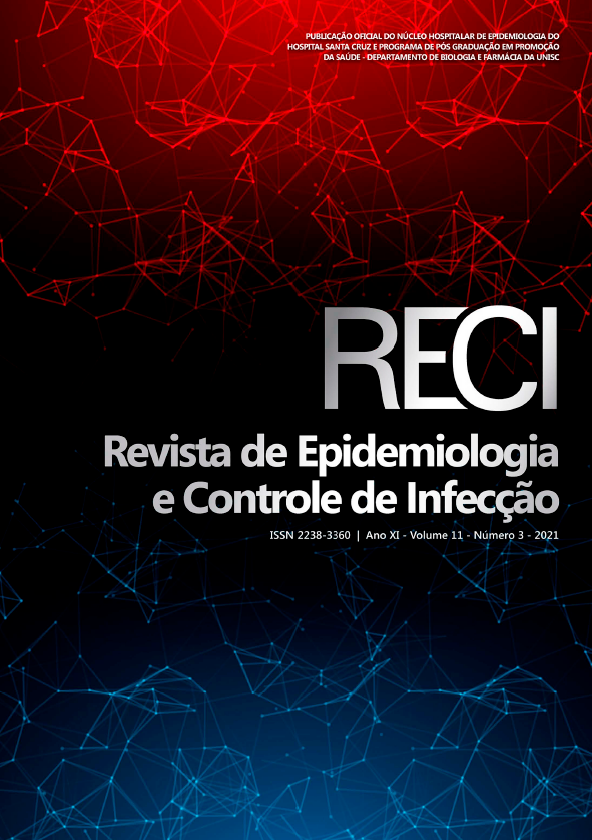Prevalence of Nosocomial Infection Microorganisms and the Presence of Antimicrobial Multi-Resistance
DOI:
https://doi.org/10.17058/reci.v11i2.15187Palavras-chave:
Infecção nosocomial, Resistência Bacteriana, MultirresistênciaResumo
BACKGROUND AND OBJECTIVES: hospitals represent the place where multidrug-resistant bacteria are concentrated and from where they spread within the institution and to the community. Thus, this research aimed to verify the profile of microorganisms related to nosocomial infection and to analyze the existence of multidrug-resistant bacteria at the Hospital de Caridade de Santo Ângelo/RS, the largest hospital in the city. METHODS: hospital infection data from 100 medical records, from August/2016 to March/2017, maintained by the Hospital Infection Control Committee were used. Bacterial identification was carried out by the Microbiology Laboratory of the hospital using morpho-tinting and biochemical methods; and antimicrobial susceptibility was determined by the disk diffusion method. Bacterial multidrug-resistance was considered based on resistance to three or more classes of antimicrobials. RESULTS: the three most prevalent microorganisms were Acinetobacter baumannii (17%), Escherichia coli (16%), and Staphylococcus aureus (8%). The hospital unit with the highest number of isolates was the adult Intensive Care Unit, with 41% of the cases. Tracheal secretion, urine, and wound secretion samples provided the highest number of isolates. Sixteen different species/groups of multidrug-resistant bacteria were identified, as follows: Morganella morganii (100%), Hafnia alvei (100%), Enterobacter sakazaki (100%), Serratia spp. (100%), Enterobacter aerogenes (100%), Proteus vulgaris (100%), Acinetobacter baumannii (100%), Klebsiella pneumoniae (83%), Enterobacter spp. (75%), Klebsiella ozaenae (66%), coagulase-negative Staphylococcus (66%), Escherichia coli (56%), Serratia rubidaea (50%), Serratia marcensces (50%), Staphylococcus aureus (37%) e Pseudomonas aeruginosa (28%). CONCLUSION: the large number of multidrug-resistant isolates reinforces the importance of isolation and restriction strategies to avoid cross-contamination to inside and outside the hospital.Downloads
Downloads
Publicado
Como Citar
Edição
Seção
Licença
Copyright (c) 2021 Leticia Beatriz Matter, Juliana Rhoden, Daiane Prestes, Fábio Pertile, Joise Wottrich

Este trabalho está licenciado sob uma licença Creative Commons Attribution 4.0 International License.
The author must state that the paper is original (has not been published previously), not infringing any copyright or other ownership right involving third parties. Once the paper is submitted, the Journal reserves the right to make normative changes, such as spelling and grammar, in order to maintain the language standard, but respecting the author’s style. The published papers become ownership of RECI, considering that all the opinions expressed by the authors are their responsibility. Because we are an open access journal, we allow free use of articles in educational and scientific applications provided the source is cited under the Creative Commons CC-BY license.


